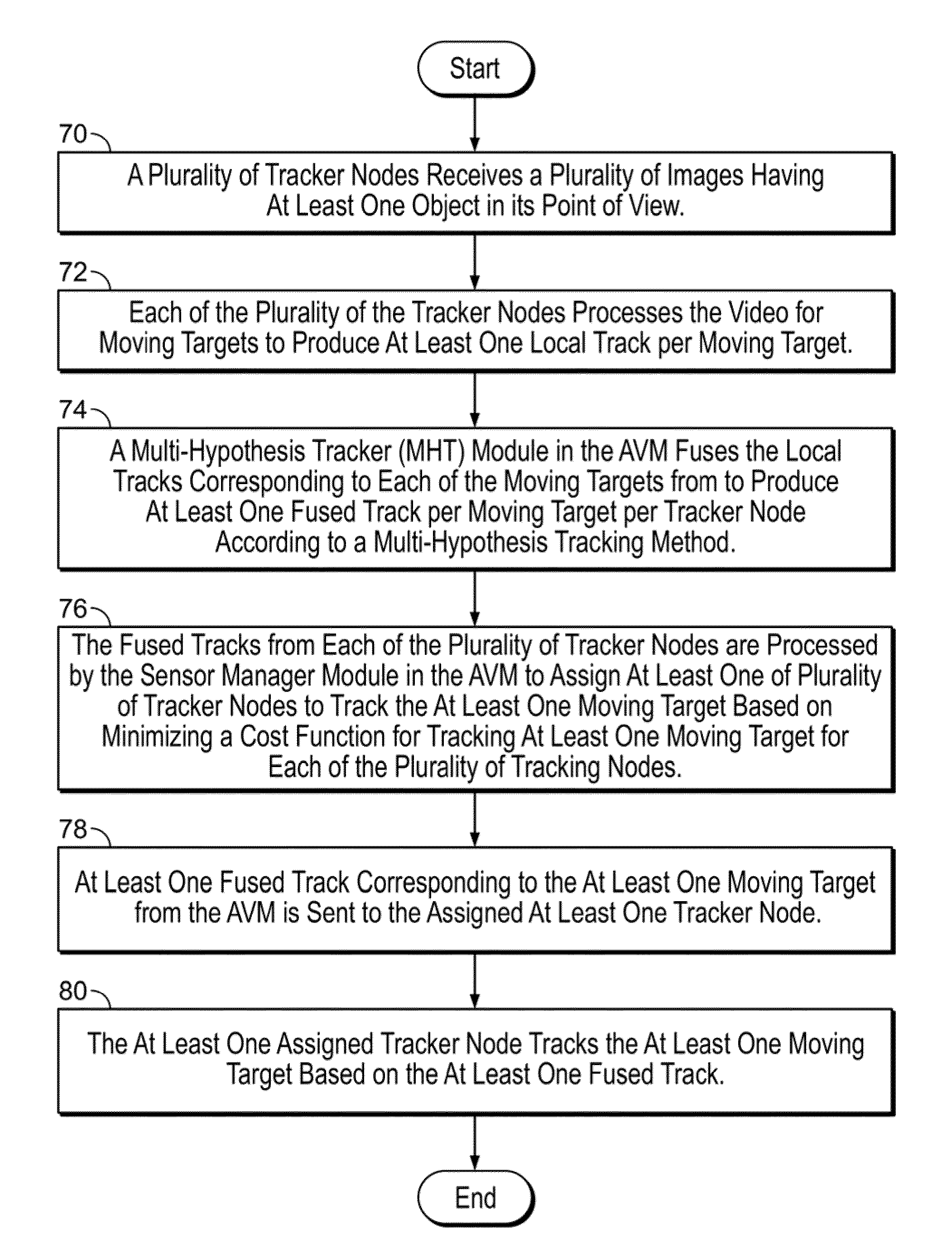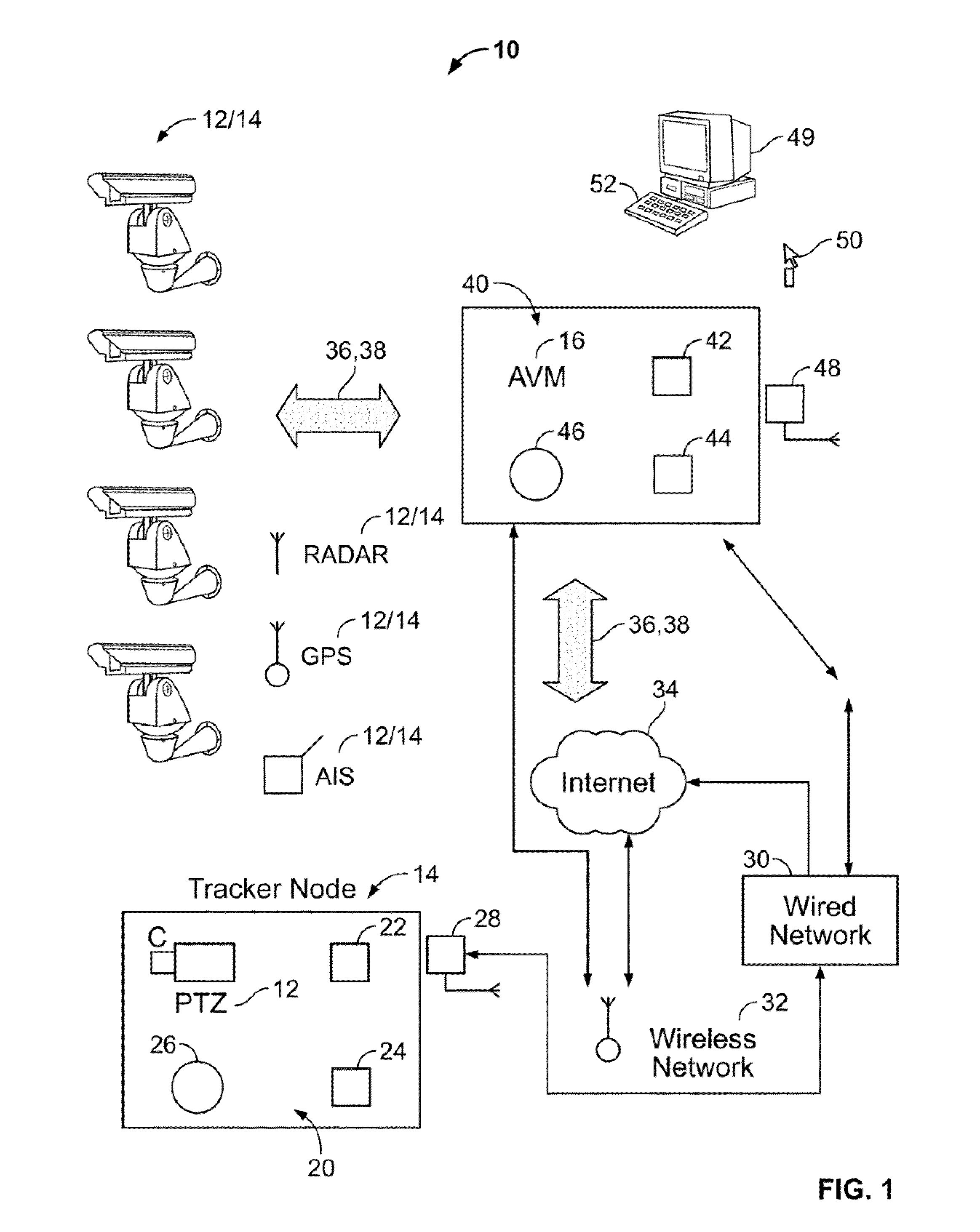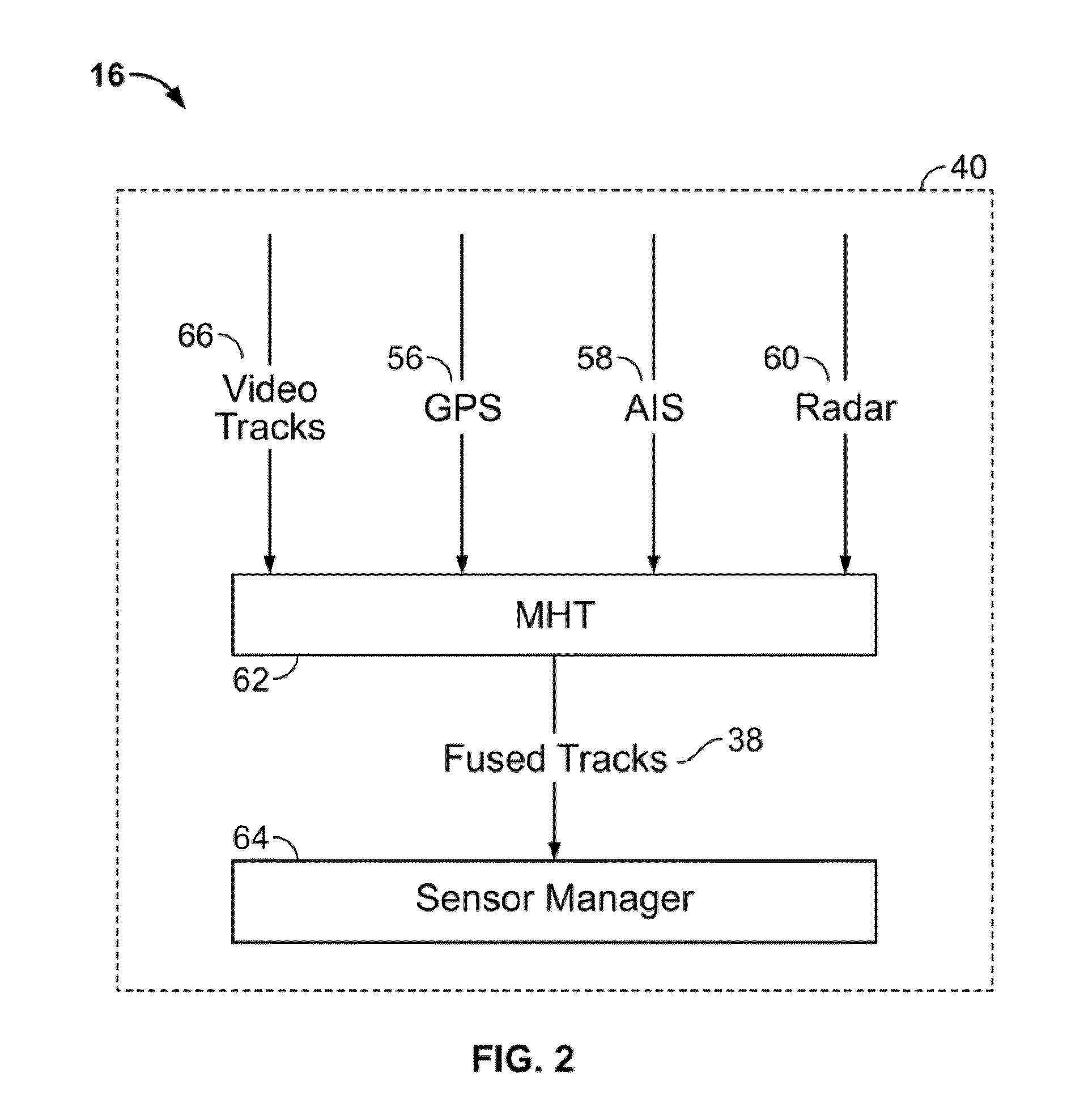Active coordinated tracking for multi-camera systems
- Summary
- Abstract
- Description
- Claims
- Application Information
AI Technical Summary
Benefits of technology
Problems solved by technology
Method used
Image
Examples
Embodiment Construction
[0026]FIG. 1 illustrates an exemplary hardware architecture of an active collaborative tracking (ACT-vision) system 10 for coordinated tracking of objects, according to an embodiment of the present invention. The ACT-vision system 10 is configured to automatically control a plurality of individual PTZ cameras to follow a particular target, or a set of targets, to optimize arbitration among the PTZ cameras, and to optimize PTZ camera-to-PTZ camera handoff for determining which PTZ camera(s) is the best camera(s) for tracking and maintaining focus upon one or more targets. The goal of the present invention is to optimize sensor assignment to obtain the best quality coverage of one or more targets given the availability of one or more sensors.
[0027]According to an embodiment of the present invention, a strategy for tracking and maintaining targets in view assumes each camera is or can be modeled as a PTZ camera, i.e., a fixed camera may be thought of as a PTZ camera with a fixed locati...
PUM
 Login to View More
Login to View More Abstract
Description
Claims
Application Information
 Login to View More
Login to View More - R&D
- Intellectual Property
- Life Sciences
- Materials
- Tech Scout
- Unparalleled Data Quality
- Higher Quality Content
- 60% Fewer Hallucinations
Browse by: Latest US Patents, China's latest patents, Technical Efficacy Thesaurus, Application Domain, Technology Topic, Popular Technical Reports.
© 2025 PatSnap. All rights reserved.Legal|Privacy policy|Modern Slavery Act Transparency Statement|Sitemap|About US| Contact US: help@patsnap.com



